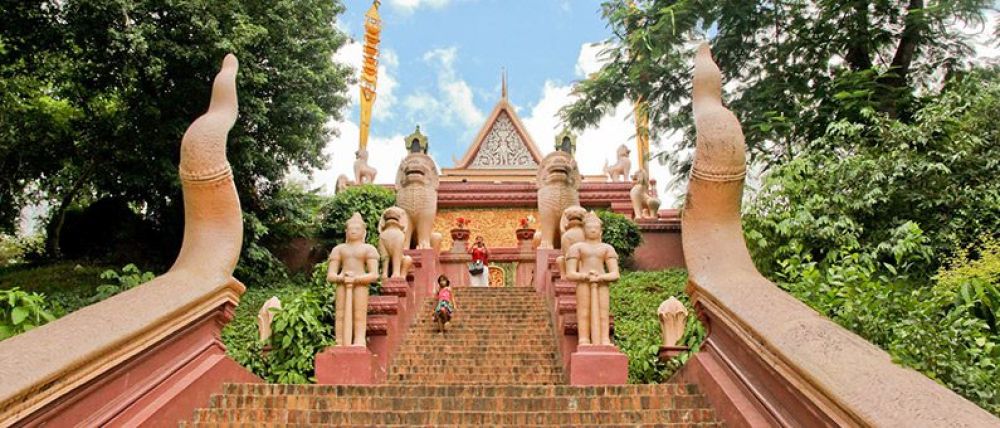

The origins of tourism at Wat Phnom, a historic temple located in the heart of Phnom Penh, trace back to the enchanting lore and legend surrounding its creation. According to popular belief, Wat Phnom was founded in the late 14th century by a wealthy widow named Daun Penh after a great flood washed a tree containing four bronze statues of Buddha onto her property. The hill (Phnom in Khmer) on which the temple now stands was man-made using soil from the surrounding plains, and it is from this hill that the thriving city of Phnom Penh derives its name.
Tourism in this area began as a trickle of intrepid explorers and colonial residents during the French Indochina period in the late 19th and early 20th centuries. Originally, these visitors were drawn to the temple's architectural significance and the sense of tranquility it offered in a rapidly modernizing city. Over time, the site grew to be recognized as an important cultural and historical landmark for both locals and foreign visitors.
After Cambodia's proclamation of independence in 1953, the increase in international awareness and political stability led to an upsurge in tourism. Wat Phnom, with its serene beauty and magnificent views over the city, became an essential stop on the tourist circuit. However, the rise of the Khmer Rouge regime in the 1970s and the subsequent turmoil resulted in a sharp decline in tourism, with many of the country's historic sites, including Wat Phnom, falling into neglect.
The 1990s were marked by a period of recovery and renaissance for Cambodia and Wat Phnom. With the nation opening up after years of isolation, tourism slowly began to recover. Efforts to conserve and restore Wat Phnom were initiated as part of a broader push to preserve Cambodia's cultural heritage. Efforts included repairing the temple's structures, landscaping its grounds, and improving visitor facilities.
In the 21st century, tourism at Wat Phnom has seen a significant transformation. The temple is now firmly established on the itineraries of a diverse range of tourists, from backpackers to luxury travelers due to the concerted efforts to develop infrastructure and promote Cambodia's rich history and culture.
Visitor Experience Enhancements: The grounds surrounding Wat Phnom have been upgraded to enhance the experience for tourists. This has included the introduction of English signage and the provision of guides who can relay the history and significance of the temple to international visitors.
Sustainability: There has been an increased focus on sustainable tourism practices, including the management of environmental impacts and the promotion of responsible visitor behavior to ensure the preservation of the temple for future generations.
Digital Presence: In line with global trends, Wat Phnom has expanded its digital footprint to attract tourists. This includes a strong presence on social media platforms and inclusion in virtual tours, allowing those unable to travel the opportunity to experience the temple remotely.
Today, Wat Phnom stands not only as a symbol of Phnom Penh's rich heritage but also as a testament to the resilience of Cambodian culture in the face of adversity. As tourism continues to evolve, Wat Phnom, a site of tranquil spirituality and historical curiosity, endures as a compelling draw for visitors from around the globe.